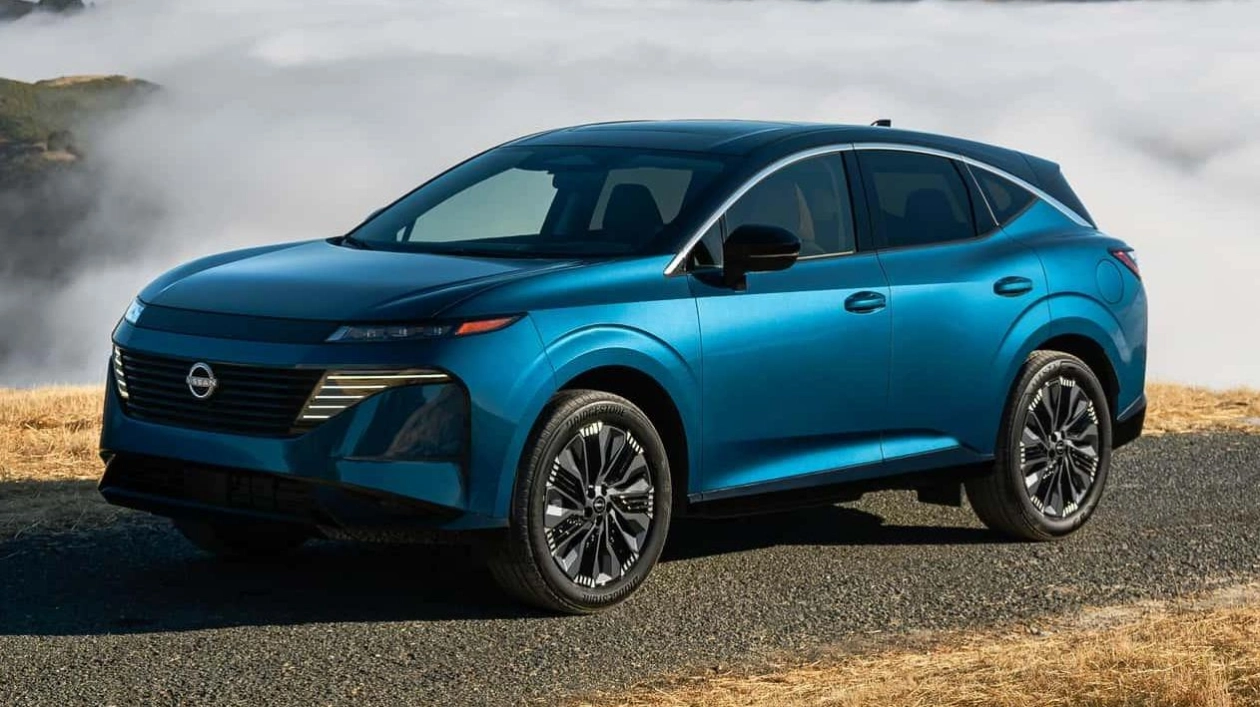Nissan dubs the 2025 Murano a 'road-going sanctuary.' This marks the first time the Murano offers optional massaging front seats, while all models feature a new digital cockpit equipped with dual 12.3-inch displays. The 2025 model is also the first to introduce 21-inch wheels, available exclusively on Platinum trims. Standard across the range is Nissan's Safety Shield 360 driver-assist suite. The exterior has undergone a comprehensive redesign from front to back, and under the hood, a new powertrain replaces the previously unpopular CVT.
Given that the outgoing Murano was introduced back in 2015, some might argue that the new model is long overdue. However, everyone can agree that it is larger, albeit marginally—the fourth-generation crossover is 2.6 inches wider and boasts nearly 2 additional inches of ground clearance. While the overall length and height remain nearly identical to the previous model, the wheelbase remains unchanged at 111.2 inches. This results in similar interior dimensions, with slightly reduced rear legroom (36.3 inches) compared to increased front legroom (44.3 inches).
The Murano's appeal has never hinged on minute interior dimensions. Since its debut in 2003, the crossover has been celebrated for its distinctive styling, a trait that remains unchanged. Nissan has adopted a split light motif, replacing the large angular headlights and contrasting angles with thin lamps above a largely symmetrical grille. This design is somewhat reminiscent of the new Kicks, though Nissan retains the V-Motion theme with the Murano's broad, smiling face and LED lamps integrated into the grille corners.
Moving further back, the side mirrors have been relocated from the A-pillar to the doors. The third-generation Murano's aggressively curved front fenders now feature flat body lines extending to the rear, where they intersect with flared rear haunches. The Murano's D-pillar kink, a design element that has persisted since the first generation, remains but is offset by chrome trim that creates a coupe-like roofline. The rear end has been completely redesigned, featuring thin taillights that span the width of the liftgate. The license plate cutout has been moved to the bottom of the rear fascia. According to Nissan, this all culminates in a 'more premium' style for the mid-size crossover.
An even more dramatic—and much-needed—redesign has taken place inside. The dual displays mentioned earlier define the 2025 Murano's interior, which eliminates nearly all physical switchgear in favor of digital and haptic controls similar to those found in the Ariya. Google built-in is part of the tech package, which includes options such as ProPilot Assist 1.1, Invisible Hood View for effectively 'seeing' through the engine bay, and the 3D Intelligent Around View camera. The digital driver display is configurable for multiple views, and an optional color heads-up display is available on select trim levels. Wireless CarPlay and Android Auto come standard, and Nissan has added active sound cancellation to the standard features list as well. However, the 10-speaker Bose stereo will require an additional cost.
Accompanying the comprehensive redesign is a completely new powertrain. The old V-6 and CVT have been replaced by Nissan's 2.0-liter variable-compression turbo four-cylinder engine, paired with a nine-speed automatic transmission. In the Murano, this engine delivers 241 horsepower and 260 pound-feet of torque. While this represents a 19-hp decrease from the previous model, torque has increased by 20 lb-ft. The transmission continues to drive the front wheels in standard configuration, with all-wheel drive available as an option.
Pricing for the 2025 Murano will be disclosed closer to its on-sale date, which is currently slated for early next year. Based on current pricing trends, we anticipate a starting MSRP in the low-$40,000 range. A top-of-the-line Platinum AWD model is expected to exceed $50,000.






